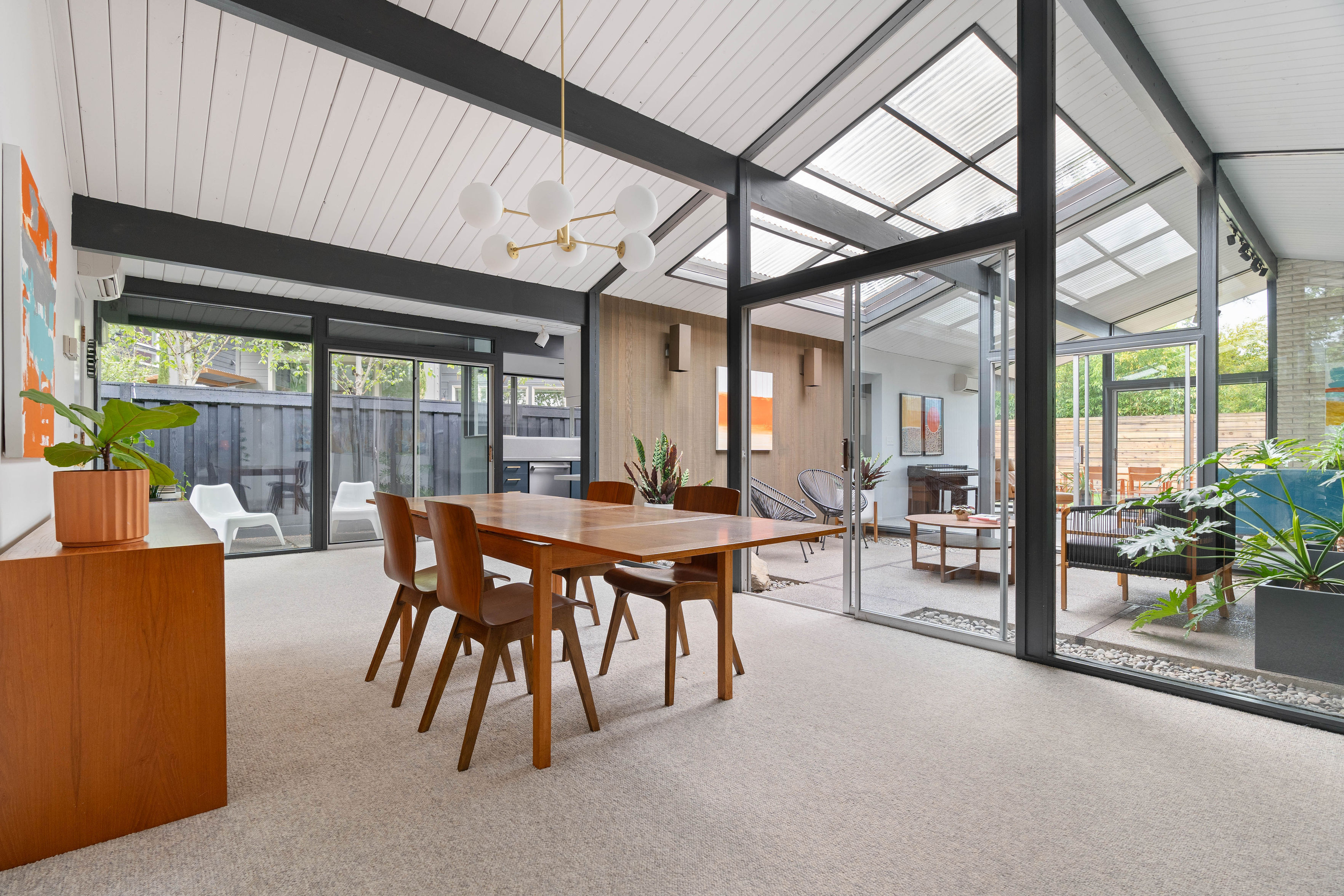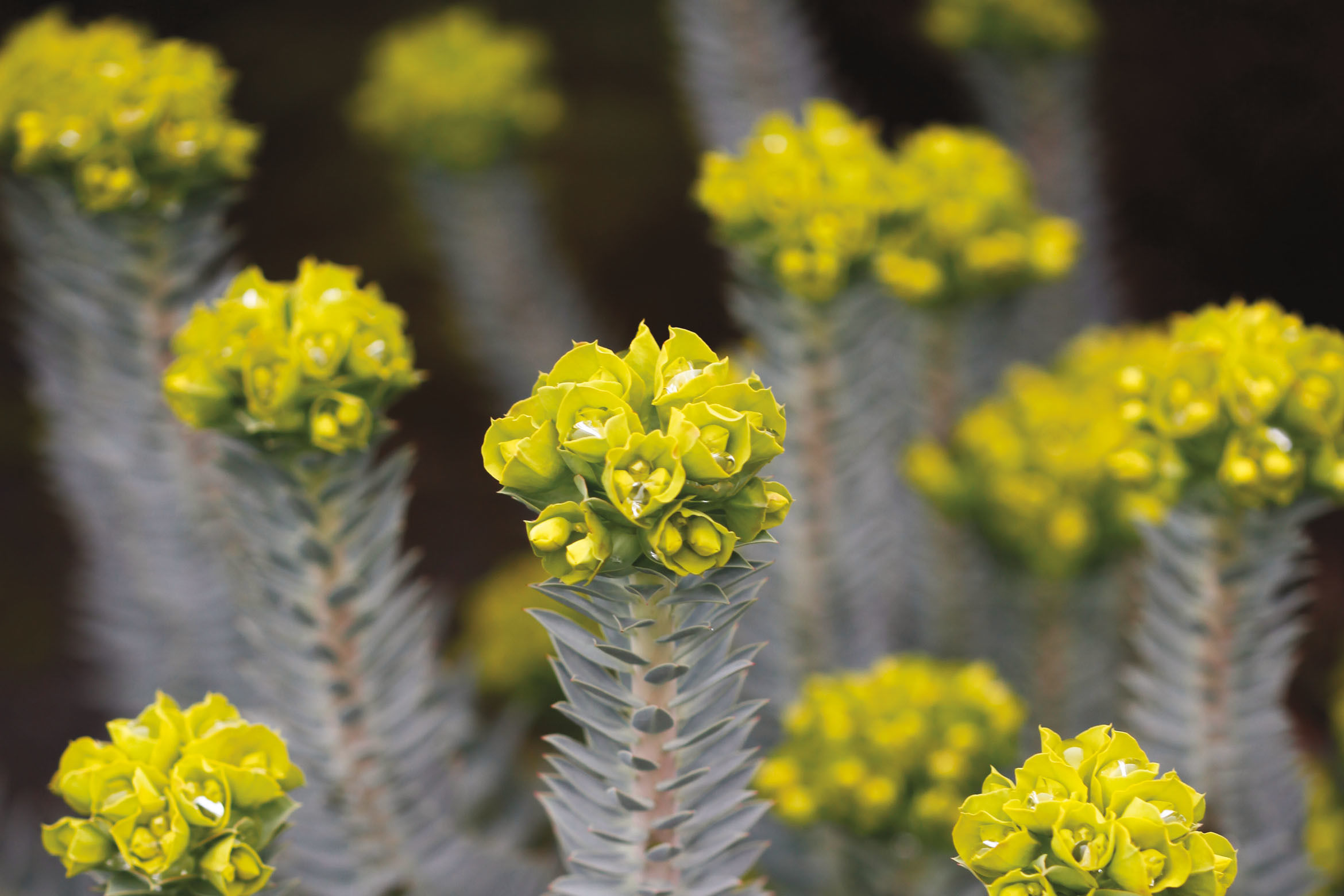
This Portland Garden Is Made for Wintry Weather
Even in midwinter with few plants in flower, Greg Shepherd and Christian Sledd’s Northeast Portland garden sparkles with texture and color. Furnished with silver, acid green, and olive foliage, warm burgundy bark, and a revolving parade of frost-tolerant seed heads and flowers, the couple’s city lot feels lush and luxuriant even in the season of cold earth and gray skies. Instead of rotten leaves, spent flowers, and muddy bare earth, the scene is flourishing, its winter guise one of several subtle, seasonal shifts.
Shepherd is co-owner of Xera Plants, a specialty nursery in Southeast with a focus on plants suited to the Northwest. When he and Sledd, an accountant, bought their house in Northeast Portland’s Rose City Park in 2011, they wanted a showcase for plants interesting through the year and adapted to our region’s distinctive, winter-wet/summer-dry climate. Just a few years later, the result is a garden that requires little to no summer water and possesses a distinctly West Coast character. “I wanted to create a garden suited to our climate, to the West,” Shepherd says. “A garden should make you feel connected to the place you live. Plants should look like they belong together.”
When they moved in, the couple removed a mammoth, dying big leaf maple and old-fashioned rhododendrons, then sheet-mulched the entire lawn with cardboard. Shepherd skipped compost, which might have been too much for the plants he planned, and added three or four inches of a three-way topsoil mix.
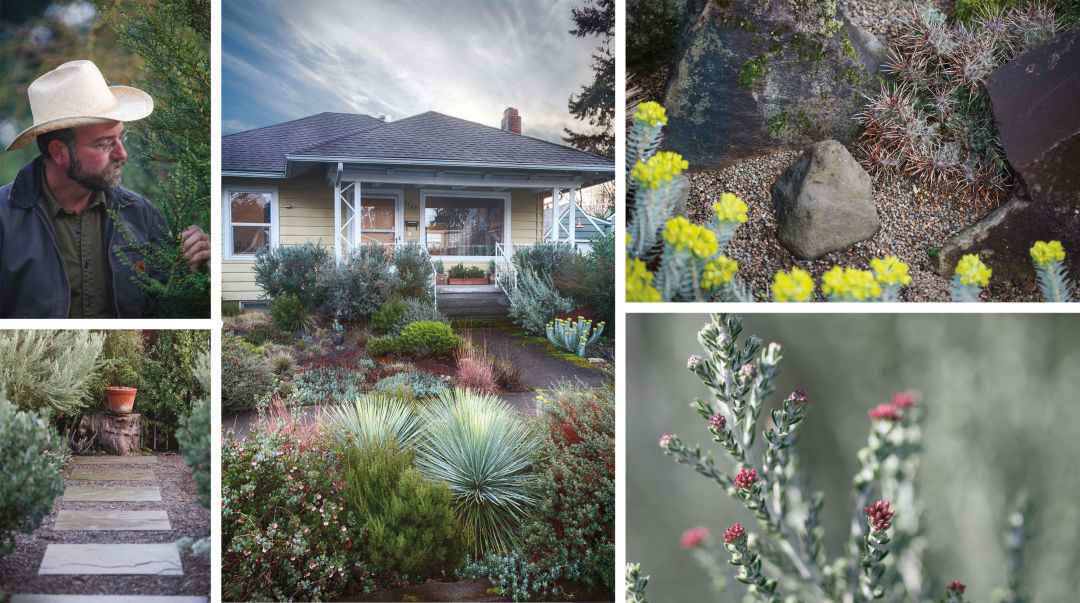
Clockwise from left: Greg Shepherd and the house he shares with Christian Sledd; local stone helps protect a cactus from cold and foot traffic; late-winter pink buds of the Sussex Silver; bluestone pavers lead to a natural stump bench
Image: Joshua McCullough
Shepherd and Sledd started planting in the late spring of 2012, working with a tight budget but an extraordinary array of plants. They continued planting the following spring. “Virtually everything you see is about four years old, though I’m always adding and refining,” Shepherd says. They chose local basalt gravel for the paths, with a few big bluestone pavers for a more formal central walkway in back. In front, small and medium-size boulders nestle amid the gravel-mulched beds: perfect for smaller, crevice-loving plants.
“In our climate, lawns are wet for over half the year, and if you have animals grass quickly turns to mud,” says Shepherd, who had spent enough time wiping the paws of Polly, the couple’s rat terrier, in previous gardens. “Gravel paths keep feet clean. In breaks between rain showers, you actually want to go out there and stroll around the clean, crunchy gravel paths. Plants show up better against the gravel, too.”
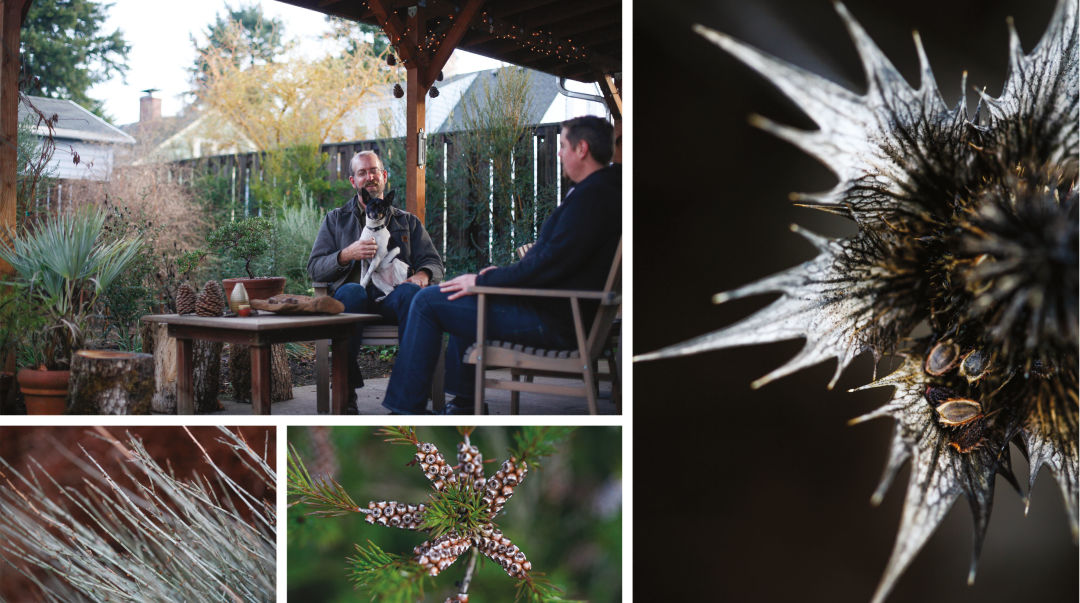
Clockwise from left: Shepherd and Sledd with Polly; sea holly seed heads offer drama even when the color goes; spring's bottlebrush flowers are winter's seed-capsule ornaments; airy bluestem
Image: Joshua McCullough
The abundant light in the west-facing house’s front yard was a boon for Shepherd’s sun-loving, drought-tolerant scheme. The back presented a few challenges. Their neighborhood, Rose City Park, experiences frigid east wind from the Gorge in winter, and—as in many urban gardens—surrounding structures can create blocks of dense shade during the day. Shepherd’s solutions included narrow, fast-growing trees like Azara microphylla that allow light through but provide fast screening for the tall backs of houses, and Ozothamnus, an ever-silver shrub that quickly fills in a blank sunny area of fence. A variety of sizes and forms of manzanita (Arctostaphylos) and rosemary also provide fast coverage in newly planted areas. Their flowers, produced all winter, feed hummingbirds and the occasional precocious pollinator.
The couple aimed to create both privacy and views of the garden from inside. By the home’s large picture windows, Shepherd planted Australian tea tree (Leptospermum) and bottlebrush (Callistemon), which offer a delicate filigree of foliage as screening from neighboring buildings without blocking too much winter sunlight.
As for the aesthetic, Shepherd created what he calls “a slightly wild chaparral look.” His strategy: plant a static foundation of drought-tolerant, evergreen, West Coast shrubs, with an ever-shifting array of dynamic, seasonally changing smaller plants to weave throughout, blending and softening the edges. Self-sowing perennials, grasses, annuals, groundcovers, and bulbs keep the garden interesting and evolving. “Self-sowing Mediterranean plants like Digitalis obscura, Euphorbia rigida, and some of the sedges (Carex) allow the look to change within a season and year to year,” he notes. “Over time, the garden starts designing itself.”
“It’s even better with frost,” he adds. “Leaves look perfect and shimmery with ice on them.”
Greg Shepherd's Favorite Winter Interest Plants
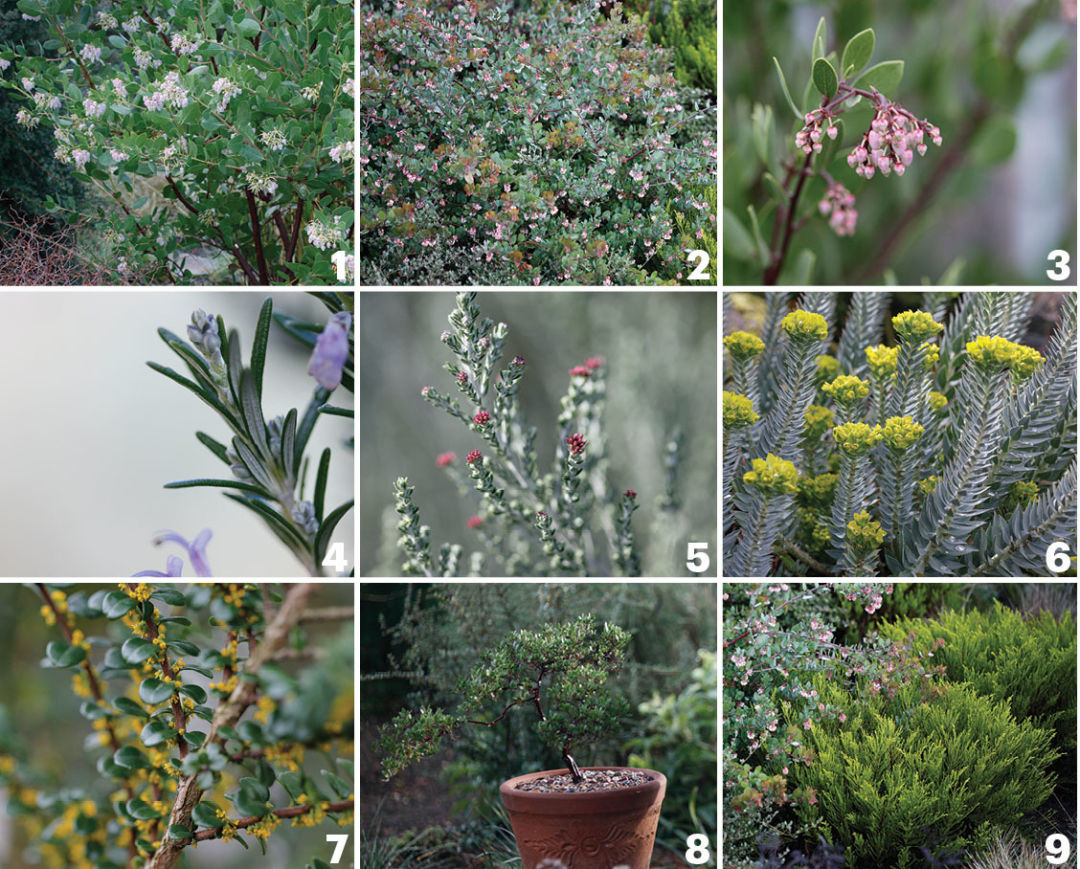
Image: Joshua McCullough
1) Arctostaphylos
Austin Griffiths
Perhaps the most beautiful manzanita in bloom, Austin’s vibrant, clear pink flowers open in late December and continue into February. Sinewy, burgundy red stems glow when slicked with rain. Hummingbirds frequent the flowers in winter; this and other manzanitas are important urban wildlife foraging habitat. Takes the shape of a small tree at 12 feet tall and eight feet wide.
2) Arctostaphylos
John Dourley
Smoky gray-green foliage covers this three-foot-tall, four-foot-wide manzanita, which starts blooming in early December and continues through April. Like other winter-blooming manzanita, this one is a hummingbird magnet. Best with a gravel mulch beneath.
3) Arctostaphylos auriculata
Diablo's Blush
A diminutive and slow-growing manzanita (reaches three feet in five years), with small felted gray-green round leaves stacked tightly along the stems. Looks especially fine in winter, with each perfectly small round leaf rimmed with white frost.
4) Rosmarinus
Gorizia
Beloved by hummingbirds in winter, Gorizia flowers off and on starting in December, with full bloom coming on in February and continuing until spring. Position directly out the back door so it’s easy to grab rosemary for cooking. Gorizia is a vigorous upright grower, with evergreen good looks and large, light periwinkle blue flowers.
5) Ozothamnus
Sussex Silver
This Ozothamnus is incredibly fast growing, to six feet tall and three feet wide—a helpful trait for a new, blank-slate garden. With delicate silvery foliage well-suited to an arid, sunny garden, Sussex Silver is particularly silver and lovely in winter, with long upright branches that move in the slightest breeze.
6) Euphorbia rigida
Suggesting a dry, Mediterranean hillside, this steely blue, drought-tolerant spurge looks svelte in the landscape all winter. In early February, brilliant acid-yellow flowers appear, enlivening the gray landscape with intense splashes of color.
7) Azara microphylla
This useful evergreen tree for small gardens has deep green, glossy, finely textured foliage complemented in February by tiny yellow flowers smelling of white chocolate and vanilla that carries in the breeze in late winter. Azara microphylla reaches about 20 feet tall and eight feet wide in a decade.
8) Muehlenbeckia astonii
This wildly geometrically branching (“divaricating”) shrub looks good year-round but especially in winter, when the leafless, wiry stems are revealed. About three feet tall, this mounded shrub takes on copper tones in the winter and is all the more alluring encrusted with ice or dripping with tiny jewel-like raindrops.
9) Hebe
Karo Golden Esk
Surviving both record heat and drought years in Portland, as well as cold, this tough little “whipcord” Hebe has fine-textured, conifer-like foliage with a vibrant yellow-green hue that holds through the seasons.

